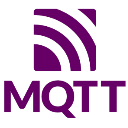MQTT (Message Queuing Telemetry Transport) is a protocol for efficient communication between devices, especially in networks with low bandwidth. A central component of this system is the MQTT broker, which receives and forwards messages. In this article, you will learn what an MQTT broker is, how it works and which popular broker implementations are available. This will give you a comprehensive overview of the basics and enable you to choose the right broker for your needs.

MQTT and MQTT broker
MQTT (Message Queuing Telemetry Transport) is a lightweight protocol specifically designed for communication between devices. It was developed to work reliably and efficiently in networks with low bandwidth or unstable connections. An MQTT broker is the heart of an MQTT system. It receives messages from so-called “publishers” (clients, that send messages) and forwards them to “subscribers” (clients, wo receive messages) who have expressed an interest in these messages. The broker ensures that messages are delivered correctly and efficiently, even if the network connections are unstable.
MQTT is often used in IoT (Internet of Things) applications and in industrial automation. Examples include networked sensors in agriculture or machine control systems in factories.
Function and architecture of an MQTT broker
How an MQTT broker works:
An MQTT broker works according to a publish/subscribe model. Publishers send messages on a specific topic to the broker. The broker forwards these messages to all subscribers who are interested in this topic. This means that publishers and subscribers do not have to communicate directly with each other.
Structure and components of an MQTT broker:
An MQTT broker consists of several main components: the communication module, which receives and sends messages, the authentication module, which ensures that only authorized users can access them, and the message store, which can cache messages if subscribers are currently unavailable.
Security aspects and authentication:
Security is very important with MQTT. Brokers often support various security measures such as TLS encryption to protect data transmission and authentication mechanisms to ensure that only authorized devices and users have access.
Popular MQTT brokers and their implementations
There are several popular MQTT brokers that are frequently used. Here are some of the most popular:
- Mosquitto: Lightweight and ideal for small to medium applications. Easy to install and configure.
- HiveMQ: Offers many enterprise features and is well suited for large companies with high requirements.
- RabbitMQ: A general message broker that also supports MQTT. Known for its reliability and extensive range of functions.
- VerneMQ: A highly available and scalable MQTT broker that is well suited for industrial applications.
- NanoMQ: An extremely lightweight MQTT broker optimized for IoT and edge computing scenarios.
This might also interest you
The REST architectural model has become a leading standard for system integration. A system connection via REST is effective and simple. Due to the statelessness of REST, easy scalability is possible and thus REST is widely used in the industry. We provide you with the necessary basic knowledge about REST and REST API in our Knowledge Base.
The need for data exchange has increased with the internet and the general networking of computer systems. For web systems, platform independence is very important here. With JSON, a resource-saving, human- and machine-readable data format has established itself for this purpose. You can find practical basic knowledge about JSON and useful tips for its use here.
OPC UA enables standardised access to machines, devices and other systems in Industrie 4.0, thus ensuring manufacturer-independent data exchange. In our Knowledge Base you will find an overview of the functionality and terms of the most important communication protocol for Industrie 4.0 and the Industrial Internet of Things (IIoT).
In our Knowledge Base you will find detailed step-by-step instructions for connections with our MQTT Plug-in for the following areas: Amazon AWS IoT Cloud, Microsoft Azure IoT Hub, IBM Watson, Google IoT Core and Siemens MindSphere IoT.

